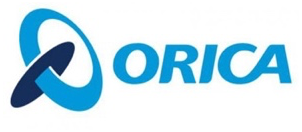9 Effective Root Cause Analysis Techniques for Your Business
Just like a tree can’t grow well if its roots are damaged, a business can’t thrive if its underlying issues aren’t fixed.
In this Whitepaper, we will cover 9 specific root cause analysis techniques tailored for safety managers seeking to improve workplace safety.

What is in the whitepaper?
For each root cause analysis technique, the guide explains what it is, steps for how to implement it, and an example scenario. The techniques featured are:
- The 5 Whys
- Fishbone Root Cause Analysis
- Failure Mode and Effects Analysis (FMEA)
- Fault Tree Analysis
- Pareto Analysis
- Bowtie Analysis
- 8D Problem Solving
- Root Cause Mapping
- Change Analysis
How to use the whitepaper?
- Download: Click on the download button above, fill out your details and check your email to receive your copy of the whitepaper. It’s available in a convenient PDF format that you can save and access anytime, anywhere.
- Read and Absorb: Take your time to read through the whitepaper thoroughly. Familiarize yourself with the concepts, techniques, and strategies presented within.
- Share and Collaborate: Spread the knowledge and collaborate with your team. Share the whitepaper with fellow safety professionals, managers, and employees to create a collective effort towards a safer workplace.
FAQs
Root Cause Analysis (RCA) is a methodical approach used to identify the underlying causes of problems or incidents. In workplace safety, RCA is crucial because it helps organizations understand not just what happened, but why it happened, allowing them to implement measures to prevent future occurrences. By addressing the root causes, companies can enhance their safety programs and reduce the likelihood of recurring incidents.
Some common pitfalls to avoid when conducting a Root Cause Analysis include:
Stopping Too Soon: Avoid halting the investigation after identifying only superficial causes. Ensure you dig deep enough to uncover the true root cause.
Blaming Individuals: Focus on identifying system and process issues rather than blaming individuals. This approach fosters a more open and constructive investigation.
Lack of Evidence: Base your analysis on evidence and data, not assumptions or opinions. Collecting and reviewing relevant information is essential for accuracy.
Failure to Follow Up: Implement corrective actions based on the RCA findings and monitor their effectiveness. Continuous improvement requires ongoing assessment and adjustment.
By avoiding these pitfalls, organizations can conduct more thorough and effective RCAs, leading to lasting improvements in workplace safety.
How We Can Help
SafetyIQ works as a root cause analysis software that gathers all the important details about workplace incidents in one place, making it easy to see patterns and find the root causes of problems.
For example, if there are a lot of slips and falls in a certain area, SafetyIQ can help managers to identify hazards (what’s causing them) - maybe the floor is too slippery or there’s not enough lighting.
Once the cause is found, businesses can take action to fix it and prevent it from happening again.
A real-life example of how SafetyIQ works is with a company called PALFINGER. They used SafetyIQ and managed to save almost a million dollars in worker compensation costs over two years. This happened because they could find and fix the problems that were causing injuries at work.
At SafetyIQ, we are dedicated to helping you create a safer work environment with our innovative safety solutions. For more information or to schedule a demo, contact us today.
Disclaimer:
The information in this whitepaper is for general guidance and informational purposes only. It is not intended as, nor should be considered a substitute for professional legal or compliance advice. Although efforts are made to ensure the accuracy and completeness of the information, no guarantees are made. Any reliance on this information is at your own risk. We will not be liable for any losses or damages arising from the use of this whitepaper. This document does not provide legal advice nor does it replace statutory requirements. Readers are encouraged to consult their own legal advisors to determine how the information in this document applies to their unique circumstances.













